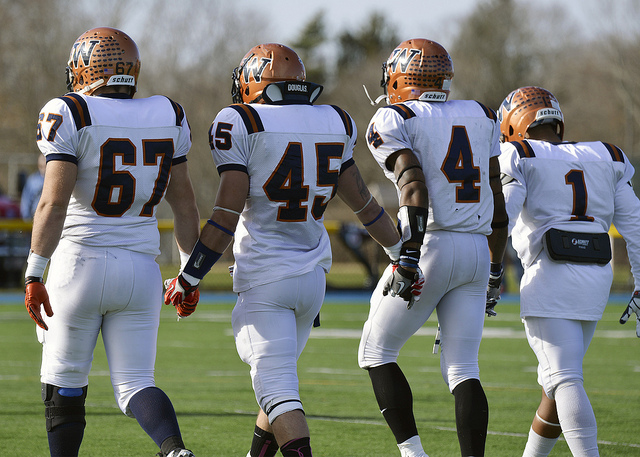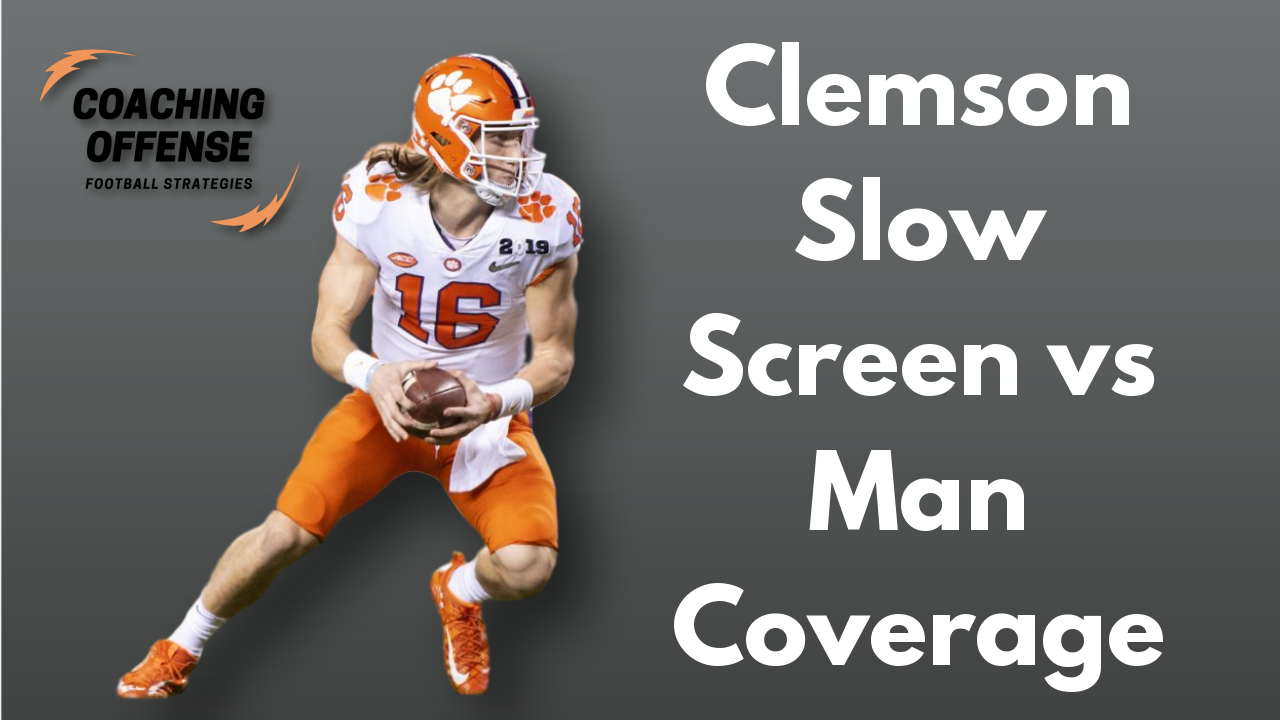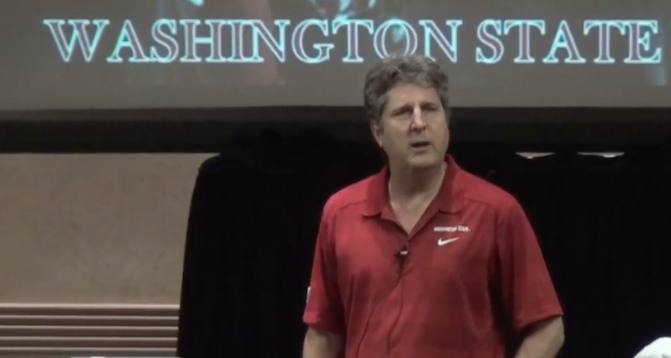This is the third part of the Coverage recognition series where we are talking about the two high structures that include Cover 2 Defense and Cover 4 defense.
Our goal is to write a series of articles on coverage recognition in an attempt to put both your mind and your quarterback’s mind at ease during the season.
EXPLAINING COVER 2 DEFENSE
Cover 2 is a great place to begin (Figure 1) because if you are older than 35 years old, it was most likely the second zone coverage you were taught as a kid. And, it helps to learn this first as it is the most difficult to teach and explain, and the remainder of 2-High coverages stem from it. Similar to how Cover 3 & Cover 1 are considered 1-High coverages because of one deep safety, Cover 2 gets it’s name because of it’s two deep safeties. It is also known by the name Two-Deep.
Just like all coverages, Cover 2 does its best to cover all areas of the field with seven players, but has different people doing different jobs than we discussed in our Cover 3 article. The corners are responsible for the flats, which are the areas from hash to sideline, and from the line of scrimmage to a depth of approximately 15 yards. The safeties are responsible for the deep-halves of the field. This is a lot of area for the safeties to cover, and in Figure 1 you can see that it opens up two main areas of the field for the offense to attack. Those two areas are the deep sideline, and the deep middle of the field.
One major detail that needs to be discussed before installing a passing game versus Cover 2 teams stems from the technique the corners are taught when playing this coverage.
The corners play an outside shade in order to funnel the receivers toward the middle of the field. This is a phenomenal idea for the defense in this coverage, because it shrinks the width of the field, making playing safety much easier, and throwing the ball much more difficult. If a receiver attempts to take an outside release on a corner, the corner will collision him and push him toward the middle of the field. This is something very important when planning your concepts, because you must practice releasing inside then quickly working back outside to your necessary landmark, similar to how you would teach your receivers to “stack” a corner. Trying to fight aggression with aggression plays into their hands, as it slows down your receiver, and will still allow them to shrink the width of the field. In today’s football, that is a serious detriment to spread offenses.
WHAT IS MATCH COVER 2 DEFENSE?
An issue that needs to be addressed that dramatically changes how an offense should plan for a Cover 2 team, is if the defense is playing basic Cover 2 rules no matter what route combination they get, or if they play a match version of Cover 2. Or, they may play both, depending upon the down and distance or opponent.
Like I mentioned above, basic Cover 2 rules include the safeties playing the deep half, and the corners squatting in the flats. This has its advantages, but what if nobody attacks their flat? When this occurs, it stresses the safeties, as there are two receivers in the deep half of the field being covered by the safety, and the corner is sitting in the flat covering nobody. This is a definite advantage to an offense running vertical concepts, because they know they can get away without having a flat route, especially within a 2×2 formation.
What defenses have done to address this is to play a “match” style of Cover 2, which enables the corners to run with a #1 receivers vertical route if nobody attacks their flat. This then turns Cover 2 into Cover 4 (will be discussed later in this article), which is a great way for defenses to stop teams that run quick game or flat routes, while also ensuring they have all portions of the field covered versus vertical-based passing games.
An important thing to keep in mind, or at least check on film, is most Cover 2 teams that run match are only concerned with the #1 and #2 receivers. Therefore, if you try to use a #3 receiver or a running back to hold the corner in the flat, it most likely will not work. The linebackers are usually responsible for the #3 receivers in Cover 2, so in this situation, the “match” rules would most likely still turn Cover 2 into Cover 4.
EXPLAINING COVER 4 DEFENSE
Cover 4 or Quarters coverage (Figure 2) is much less dynamic than Cover 2, as it simply gives each of the four defensive backs responsibility for one-quarter of the field. How the field is broken up changes from coach to coach and scheme to scheme, but it usually lets you know that the flats should be open for quick routes, and it will be very difficult to throw a deep ball either down the seams or the numbers. Think of it like Syracuse Basketball’s matchup zone. Nobody has anybody in particular, but if somebody runs into one of the deep zones, they will be covered and deep pass completions are minimal. That being said, just like Cover 2, it can be disguised using other coverages that in the pre-snap look like Cover 2, and in college and the NFL, potentially even Cover 3.
Similar to how Cover 2 is named due to it’s two deep defenders, Cover 4 gets its name because of the four defenders that are responsible for the deep portion of the field. For the same reason, it is also known as Quarters coverage.
DIFFERENTIATING BETWEEN COVER 2 & COVER 4 IN THE PRE-SNAP
If you are playing a well-coached team, this is nearly impossible, because they will hide their coverages in many ways, mainly using the corners. Like we discussed in our 1-High article, most teams will line up in a basic 2-High alignment to not give away anything in the pre-snap. When you are playing teams that like to play 2-High coverages, this basic alignment makes it even more difficult to determine coverage in the pre-snap due to the fact that the players (especially the safeties) will show less movement due to a safety not having the need to get to the flat. Versus 2-High teams, you need to look at the corners.
The major difference between Cover 2 and Cover 4 teams is the alignment of the corners on the snap of the ball. In Cover 2, the corners are going to be tighter to the line of scrimmage, and be slightly outside of your outside receivers. In Cover 4, they ultimately need to be deeper on the snap of the ball so they will not get beat deep, as they have the entire quarter of the field, from the line of scrimmage to the endzone.
So, what great defenses do is attempt to trick you by using their corners to make you think they are playing a coverage they will not ultimately be playing. They will align their corners outside and move them inside or vice-versa. They will disguise their depth, not allowing you to get an idea of the area of the field for which they are primarily responsible. And they will turn their bodies toward the quarterback either very early when playing Cover 4, or very late when playing Cover 2, to give you absolutely no idea by their body language what they will be doing. As a quarterback, the problem with this, especially for teams in the gun, is that once the ball is snapped it is difficult to catch the ball and get into your read progression while having your eyes on the corners. The corner will DEFINITELY give it away by the time the ball is snapped, but that is too late for the quarterback. This is why play-calling and receiver route adjustments are the key to beating 2-High Coverage teams.
HOW TO BEAT THE COVER 2 CORNER FUNNEL
The main thing you can do with receivers is to prepare to have them take inside releases and stack the corner. If the corner is going to play Cover 2, he is not going to be optimally positioned to cover a vertical route because his body is turned toward the quarterback, and he has an aggressive posture. And if they are playing “match”, his eyes will be inside on the #2 receiver to determine if he will be running to the flat. Use this to your advantage! Get inside, and run!!! I mean, run. If you can get a good release off the corner, it will be difficult for him to catch up to you in Cover 2. Pair this with a vertical concept that has a route read, so if they are playing Cover 4 and bail from a tight pre-snap alignment, you can break off the route and catch a hitch or curl near the sideline.
Now, nobody wants to make a living trying to throw the ball against 2-High coverages, but you will get yourself into situations where you play teams that can actually stop your running game while playing 2-High, or will play 2-High in passing situations, so you do need a plan. Besides the vertical style routes mentioned above, you can also use plays that will bring a receiver with a crossing route from the opposite side to attack the area in which that same side has concepts attacking the corner’s and safety’s responsibility. You can move that safety with a playside receiver, and replace him with a backside receiver. Both of these are concepts you can use with different players running different routes, both to the field and to the boundary, while also giving the quarterback minimal reads.
CONCLUSION
In conclusion, throwing the ball against 2-High teams is a frustrating experience, especially due to the fact there are even more hybrids and movements teams use with defensive backs that will be discussed later in this series. Therefore, you must find the plays within your scheme that can get attacked the two ways I discussed above, or get four players to one side of the field. Remember, it is still zone coverage, so they will not chase in a similar fashion to the way a man team will. Like we discuss in nearly every article, the only thing stopping you is learning and creativity. Get out there and figure out what good passing teams are doing vs. 2-High. College teams are great places to seek out for this, because they see it nearly every play, regardless of down & distance. There are answers, and they are easily accessible. Go get ‘em!!!






Good info.
This is from a chart we use.
SAFETIES:
a. Cover 2 = Depth 12 + yards. Big Base. Normally Wide & splitting #1 & #2 Receivers (Hash Area).
b. Cover 4 = Depth 10-12 yards. Skinny feet. Not as Wide as Cover 2 (Head Up to Inside #2).
CORNERS:
a. Cover 2 = Depth under 5 yds. Outside Shade. Inside Foot Back. Big Base. Looking at Offense.
b. Cover 4:= Depth 7-8 yds. Skinny \Feet, Inside Foot Back. Looking at Offense.
Thanks for your comment, Coach Mountjoy. I really love the “skinny feet” comment. I have never heard that, but will begin adding that to our coverage recognizition list immediately. Phenomenal detail!
Thanks again!